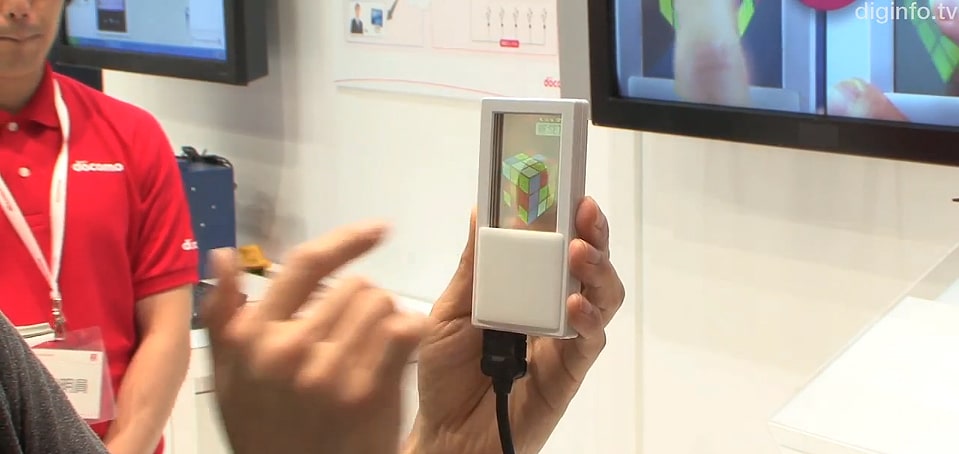What’s so appealing about a transparent smartphone? Well, it could be that it allows for a whole lot of new features. First of all, applying touch to both sides would make the user interface a new breed. There are of course a whole lot of positive effects when a smartphone goes transparent. I have written about a few projects that are all about transparent smartphones, but they don’t really come with a new user interface. A project in Japan recently demoed their take on the concept.
The most notable feature idea when it comes to a transparent smartphone is probably that you will be able to utilize both sides when creating apps and games. Imagine having a double-sided transparent smartphone, and you want to play around with an app that is a virtual Rubik’s cube. It will almost be like you’re holding the cube in your hands for real, with the slight exception that you are using your fingers. Drag and drop would be another feature that would work seamlessly while choosing folders for example. As you see, the possibilities are endless once you start thinking about it.
Docomo in Japan recently demoed a transparent smartphone that featured a double-sided touchscreen with features that could blow your mind. In the beginning, this kind of transparent smartphone really does come off as a little awkward. But as soon as they start to demo its features, your perception will change as you start imagining new and never before possible features that could be implemented.
This particular transparent smartphone is just a prototype to research the ways it could be utilized in a consumer product. If Docomo, and all the other smartphone developers around the world, decide this is something that will make a huge difference in the way we use our smartphones, and since the concept is not far from being perfected, it could be implemented quite easily. This Docomo project is certainly proof that screens and features are on the verge of being reinvented once again. Maybe not in the same profound way that the iPhone once did, but significantly enough to slip us a new branch of useful smart devices.

COMMENTS